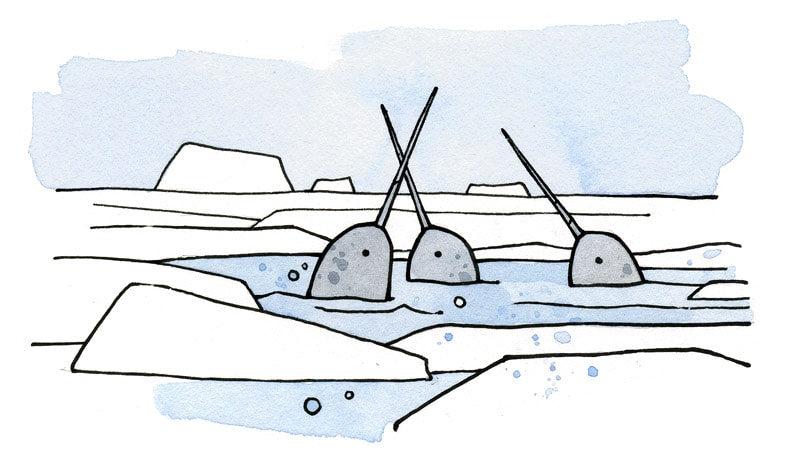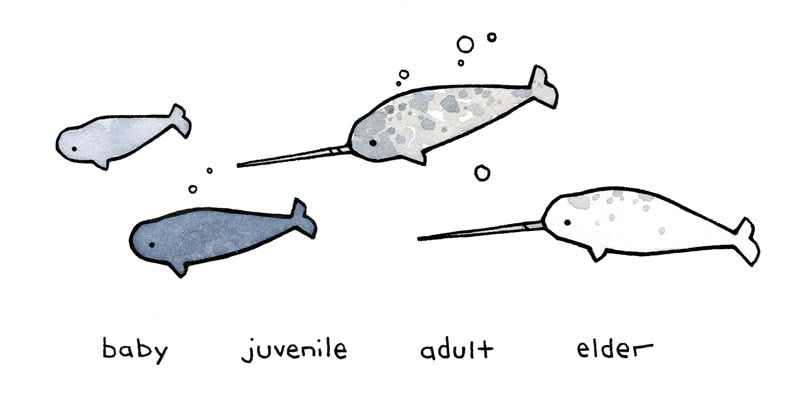Free Shipping within USA
Free Shipping within USA
September 16, 2016
Narwhals are a type of whale, most closely related to belugas. They live in the Arctic by the ice cap and sea ice, and are one of the few whale species that live year round there. You are probably already aware of their unique feature, a single spiraled tusk that sticks out of the front of their head (like a unicorn!). Narwhals are a bit of a mystery to us - they spend most of their time under sea ice, making them a little hard to study and observe.
Below are some fun narwhal facts (for kids or you kids at heart!) illustrated with some of my drawings and doodles.
Top image: 3 narwhals swimming under sea ice in the Arctic. Watercolor and India Ink.
The word Narwhal has its origins in Old Norse and Scandinavian languages. The Old Norse word nāhvalr is translated as corpse whale, named because the coloring of narwhals reminded sailors of a drowned body. Creepy!
The Inuit word for Narwhal is a little more poetic; Qilalugaq gernertaq is translated as “the one point to the sky". Named for the behavior of pointing their tusks towards the sky as they come up for air at holes in the polar ice pack.
Their scientific name, Monodon monceros, is Greek in origin. It means one-tooth one-horn (unicorn).
Narwhals change colors as they age. Babies are a blueish grey. Juveniles are a darker blueish black. As they become adults their skin changes to a blotchy gray. As they age they become lighter and older narwhals are almost completely white.
Narwhals can live to around 50 years old.
Narwhals live in pods, usually a group of 20 or less narwhals. However during summer migration these pods come together and form "super pods" which can contain hundreds or even over a thousand narwhals.
Narwhals eat shrimp, squid, and fish such as halibut and cod.
Narwhals are very vocal, they communicate with clicks, squeals, and other noises - similar to dolphins.
The Narwhal's tusk is actually a tooth that grows out of the jaw and through the upper lip. It grows in a spiral and can reach almost 9 feet.
Male narwhals have tusks. The occasional female will have a tusk, but most don't.
Occasionally a male narwhal will have 2 tusks.
Whats are the narwhal's tusk for? It's a bit of a mystery, but it is probably used to attract mates and possibly to sometimes to fight over mates. The tusk also contains nerve endings which can help the narwhal sense things about its surroundings. The narwhal's tusk probably has multiple purposes.
Sources: World Wildlife Fund, WWF Canada, Encyclopedia of Life, National Marine Mammal Labratory - NOAA, Encyclopedia Britannica, The American Society of Mammalogists, Merriam-Webster
Read More Illustrated Animal Facts
--------------------------------------------------------------------------
In the Shop

